Noyadd Farm CL – Site Review
[Caravan & Motorhome Club CL – 5 pitches site, members only]
LD2 3RX
Date of Visit: August 2025
Overall View
This is a combination site on a working sheep farm just above the market town of Builth Wells in Powys. It is family and dog friendly. It is open all year round. There is a large field at the front where ball games can be played. There are some wooden picnic benches available as well. There is a separate field set aside which functions as the CL with five pitches. There is also a separate large camping field and another tourer field. The site also offers a self-catering cottage Dan-yr-Eglwys, ideal if non-camping or caravanning friends wish to holiday with you.
https://www.danyreglwys.co.uk/camping
For those people who are into walking, hill running, mountain and cycle riding, this is an ideal place from which to base yourself. There is still plenty to do around for those who are not so active, please see around and about later.
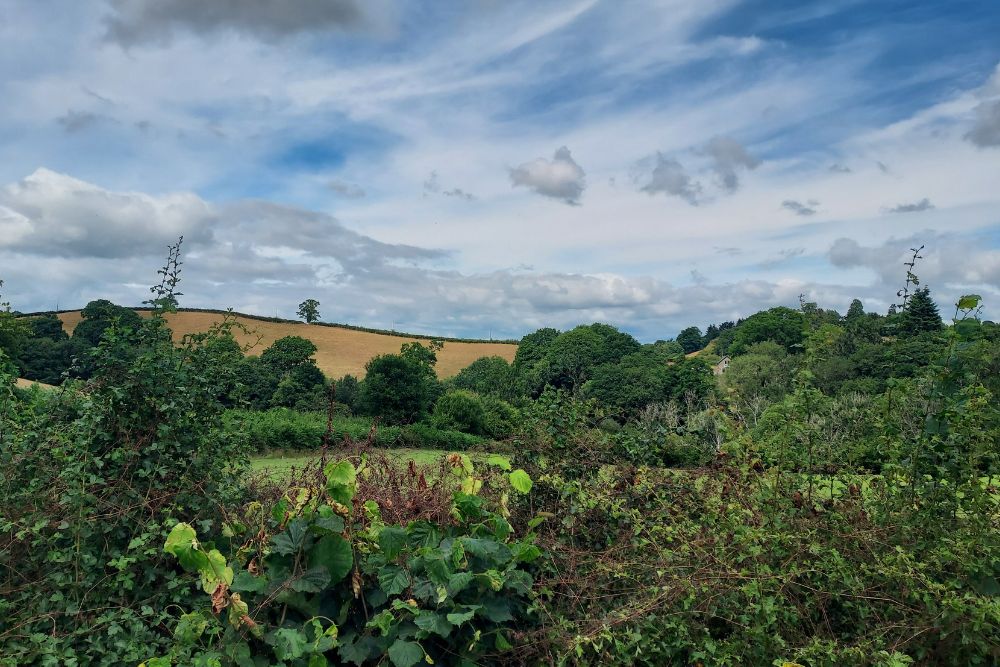
It is set in the Welsh countryside and there are excellent views of the Epynt mountains all around from each pitch. The River Duhonw runs down the bottom of the site. Both the Wye Valley Walk https://www.wyevalleywalk.org/ and the Epynt Way are close to the site. https://www.epyntway.org
Access from the town is straight forward, you are advised to watch the arrival video to help with the one-way system in Builth Wells itself.
The owners called on our first night and took cash payment, they were friendly and helpful.
Facilities
Each CL pitch is hardstanding and has its own water tap and 16amp EHU. Grey water is disposed to the hedge line, a serviced pitch in effect. The CDP is at one end of the field, just through a gate and has a tap above. Pitches are relatively level although we found it easier to use a small ramp to help with putting the canopy up.
There is a shower and toilet block situated in the farm yard and there is also an accessible toilet but not a shower. There is also a wash sink for the campers to use. Rubbish is disposed of here including recycling.
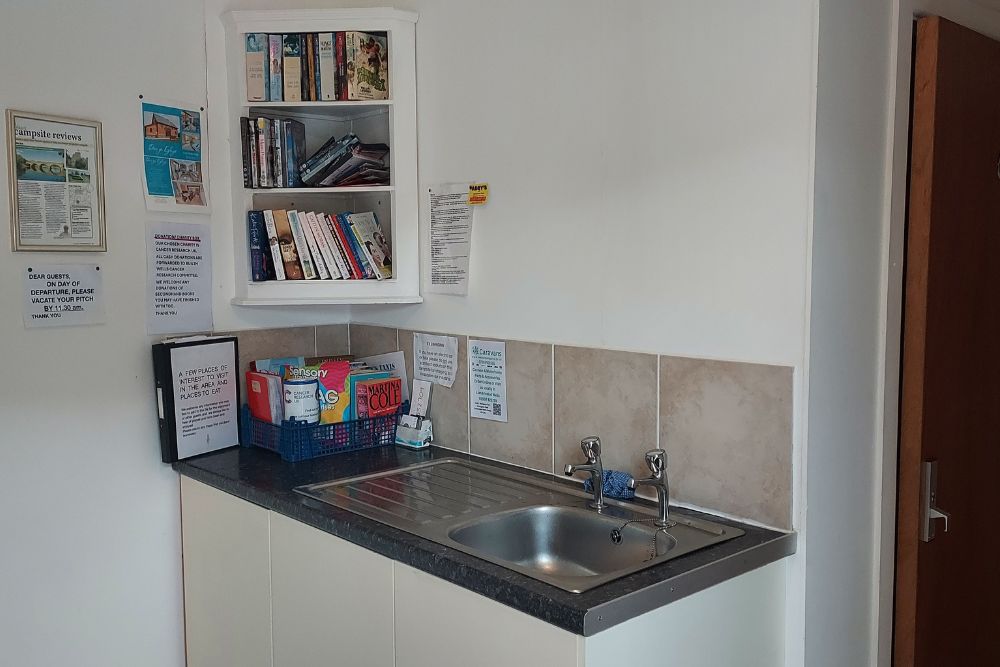
TV and radio reception was ok – AM/FM only for radio. Mobile wise, we could occasionally stream with EE but it was hit and miss. Their coverage checker suggests 4G and 5G coverage should have been reasonable outdoors. Three was poor but their coverage checker suggested 4G should be fine inside and out. Both Vodafone and O2 suggested good 4G coverage inside and out. There was no WiFi offering.
Review of Site Pitch
The hardstanding pitch element is really only sufficient, width wise, for your van or motorhome – awnings, canopies etc are pitched on grass to the side – this is very good as it gives you the best of both worlds. Parking your car is possible to the offside of your van. The pitches are very well spaced out and you do not feel crowded at all.
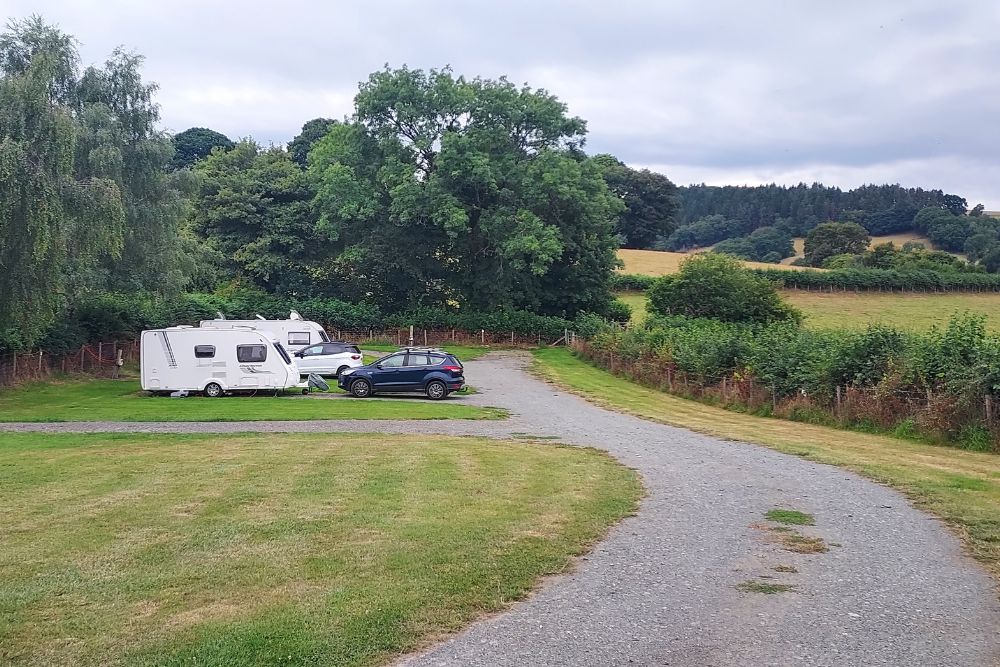
Around and about
Llandrindod Wells – this is a Victorian Spa Town about 20 minute drive north of Builth Wells on the A483. It is very clear on entering the town that it had a Victorian Heyday and the architecture befits that time. There is an interesting high street with a particularly good DIY store, over 3 floors and which stocks all manner of goods, including those useful to caravanners. Powys County Council has its headquarters here and there is a beautiful park to walk around. LW has another claim to fame as this is where the Heart of Wales Railway Line changes drivers. The southern half driver returning to Swansea and the northern to Craven Arms and onto Shrewsbury. Finally, there is a large Tesco Supermarket with reasonable price fuel to the northern end of the town.
Resolution Laundry, [now part of the Wash Me Group] – as ever, laundry keeps mounting up and one thing few CLs offer is a laundry. To that end, it is necessary to source independent facilities. A relatively new feature, which appears to be growing in availability, are these laundries, usually situated on the side of supermarkets and often fuel stations. They usually offer a small 9.5 kg wash and a larger 20kg. This is very helpful as you can wash a complete bag of laundry and bedding at one go. It is all contactless and you get a text a few minutes before the cycle ends. There is also a 20kg dryer. We have found them to be very effective and there is one in Builth Wells, currently by the Texaco garage. Reasonable prices for the ease of completing the laundry. www.thelaundryrevolution.co.uk
There are a good selection of shops in Builth Wells, many independent ones. Bakeries to clothing, to baby wear are all in evidence. There is a Post Office as well. There is parking on the High Street which is one-way only. There are disabled parking spots too but be prepared to make one or two rotations before landing a spot. Car parks are available about a 5-10 minute walk from the main area. It is mainly flat however.
Builth Wells has two main fuel stations, Asda Express & Texaco. Best to check a fuel app to find out the most economical prices.
A short 15 minute drive, through delightful scenery and amazing sunsets will bring you to The Seven Stars Inn in Aberedw. It is run by the local community who rescued it from closure a few years ago. We had superb, reasonably priced meals here. It is a very old building and there is accommodation attached. It is dog and child friendly too. Care needs to be taken when parking as it is mainly on the village road. It was very busy and staff and locals alike were very friendly. www.sevenstarsaberedw.co.uk Advance booking is recommended.
A very pleasant day out can be found at the Elan Valley, its dam and visitor centre with a café and all the facilities. There is a blue route which is relatively flat, allows you to see the dam and a pleasant stroll by the river and some of the forest by the side of the Centre. https://elanvalley.org.uk/visit/visitor-centre/
Brecon is a major market and garrison town in the foothills of the Brecon Beacons. It used to be a major industrial hub dealing with coal, iron and limestone from the surrounding areas. Initially this was moved by canals towards Newport and then to sea. The arrival of the Railways in the mid-19th century saw its demise and by the 1990’s was all but derelict. Following major restoration, it is now a beautiful leisure facility for all to use. A very pleasant afternoon can be spent on a 2.5 hour cruise on a narrowboat with commentary and toilet/refreshments available as well. It is dog friendly and will accommodate wheelchairs providing they are booked ahead. Indeed, during the main season, booking ahead for everyone is strongly recommended.
https://www.dragonfly-cruises.co.uk
To get to Brecon, you turn right from the site onto the road to Brecon. What follows is a glorious half hour drive through some of the most glorious scenery and vistas everywhere you look. It is possible to do the journey to Brecon via the A470 but that is to miss a wonderful opportunity for some superb views. One word of caution between the cattle grids there are free roaming sheep, slow down and enjoy the views and all will be fine.
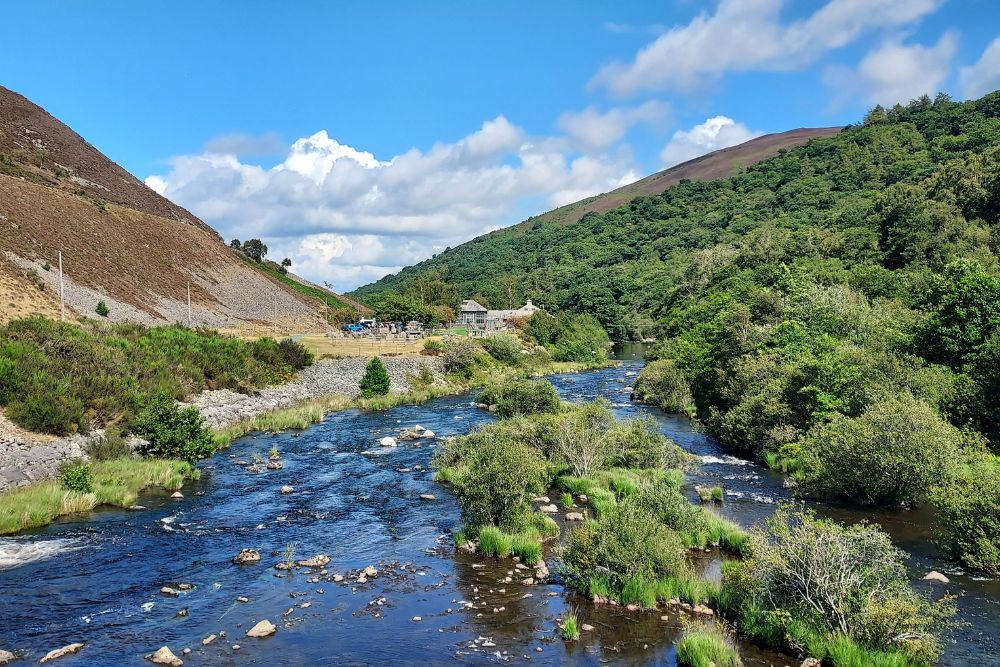
For those people who have active dogs, then the Wye K9 secure dog exercise centre may be of interest. You do need to book, however. http://www.wyevalleyk9.co.uk/
A short twenty or so minute drive will bring you to a very pleasant, dog friendly Garden Centre, cafe, restaurant and all the usual facilities of a large Centre. It is called ‘Old Railway Line Garden Centre’. Massive toasted teacakes and lots of beautiful plants to see. www.oldrailwaylinegc.co.uk
Summary
This is a very pleasant and well facilitated CL. The setting is very picturesque and there is a good range of activities to do for all ages and abilities. We enjoyed our stay very much and would certainly return again.
Eco-friendly upgrades for your static holiday home

If your static caravan is a much-loved UK holiday retreat rather than your main residence, it’s still worth considering some smart, sustainable upgrades. Not only can eco-friendly improvements lower your running costs during peak seasons, but they also help reduce your environmental impact while making your stay more comfortable and efficient.
Here are some simple yet effective ways to make your holiday home greener.
Insulate to stay warm (or cool)
Even if you only use your static caravan during spring and summer, better insulation can make a big difference – keeping the heat in on cooler days and helping to regulate temperature when it’s hot outside.
Double glazing is a good starting point. Upgrading single-pane windows helps retain warmth and cuts down on condensation. You can also add lined curtains or thermal blinds to reduce draughts.
For older caravans, upgrading wall or floor insulation – where possible – can also improve energy efficiency and comfort.
Switch to low-energy lighting and appliances
LED lighting is one of the easiest eco-upgrades and they last much longer. Since holiday parks often have higher electricity tariffs, this swap could save you money over the season.
If you’re upgrading your fridge, heater or kettle, choose A-rated appliances where possible. Even items used occasionally can make a difference if they’re energy-efficient.
Portable solar for off-grid convenience
Many static caravan owners use their holiday homes for weekend getaways or extended summer breaks, making solar energy a practical and eco-conscious choice. If your park allows it, consider installing a small solar panel kit to power your lighting, phone charging, or a radio.
Portable or semi-flexible solar panels are ideal if you’re not allowed to mount them permanently. A basic 100W kit may be all you need for light use. Solar Guide explains how to choose the right size and type of panel for caravan use.
Before investing, always check your site’s rules and make sure your setup is safe and weatherproof.
Further reading: Caravan technology – how innovation is transforming your home on wheels.
Collect and reuse rainwater
If your static caravan has a gutter system or roof drainage, you could install a basic water butt to collect rainwater. This water is perfect for washing your car, cleaning the decking, or watering potted plants around your pitch.
You may only be there occasionally, but over the course of a season, this small upgrade can save litres of fresh tap water. For more tips on water conservation, visit Waterwise.
Choose sustainable materials for upgrades
Planning to refresh your caravan’s interior with new flooring, furniture, or fabrics? Choose low-impact, natural or recycled materials where possible.
Look out for FSC-certified wood, jute rugs, recycled polyester cushions, or low-VOC (volatile organic compound) paints and adhesives. These small swaps improve indoor air quality and reduce reliance on non-renewable resources.
Make small changes for a big impact
Eco-friendly living isn’t just for permanent homes. Making even a few simple upgrades to your static holiday home can make it more comfortable, cost-effective and environmentally friendly.
Whether it’s switching to LED bulbs, harvesting rainwater or investing in portable solar, each small improvement helps reduce waste and energy use – without sacrificing the holiday home lifestyle you enjoy.
Start with the changes that make the most sense for your usage, and build from there. Your caravan may only be in use a few months of the year, but it can still be part of a greener future.
Further reading:
Being eco-friendly in and around your ‘van
Oak House CS Site Review
[Caravan & Camping Club CS – 5 pitches site, members only]
WR6 6QB
Date of Visit: July 2025
Overall View
This is an adults and members only dog friendly site, situated close to the village of Martley in one direction and slightly further to Worcester in the opposite direction. To access the site you are advised to follow the route given by the owners, please see arrival video HERE. The site also offers Air BnB so it is possible for non-caravanning and camping friends to holiday with you. Please see the CCC website for further details. The owner meets you on arrival and you are handed a very useful information leaflet. The owner is very helpful and friendly.

The site is in the grounds of the main house and working farm/business at the top of the site.
Facilities
The CL has 16amp EHU to each pitch, plus cold water tap and grey water is disposed of to the hedge line – in effect a serviced pitch.
Free WiFi is offered – code provided on the welcome leaflet. TV streaming was possible.
Mobile wise only EE offered 5G and the signal inside the ‘van was usable but not great.
4G was offered by all but Vodafone suggested you’d struggle indoors.
Both TV and radio reception was fine.
There is a bus service which runs on the road outside with bus stops at Chantry School if you turn left out of the site and turning right you will have to walk to The Masons Arms. Both require some walking distance on roads without a pavement. It is possible to request a drop-off, on your return, to Pencroft Yard which is next door to the site.
https://www.firstbus.co.uk/worcestershire
There are two local taxi firms, advance booking required.
- Taxi Tom, based in Martley/Bromyard, can be reached at 07702 083 344 or 01886 822 245. Or,
- https://www.brooksidetaxis.com/
The site also benefits from a spotlessly clean and fabulous toilet/shower block, plus a washing up area for those who require it. There is one shower which is of domestic style in a cubicle. There is a step into the building and also the shower. Floor towels are provided which are a nice touch. The toilets in the building are not accessible, whilst being fully functional, are too small for a wheelchair for example.
Outside of this building is the CDP and there is a fresh water tap here too.
Supermarkets – It is possible to order from the following supermarkets and have them deliver to the site – this is particularly useful as the site is in the countryside. Asda; Sainsburys; Tesco & Waitrose.
Fuel – there are a few independent garages as you travel round. The bigger, supermarket brands are on the outskirts of Worcester.
Tesco Express is about a 15 minute drive, turning right from the site. Here you will find takeaways, cashpoint and a launderette.
Caravan accessories are available at Caravan Stuff 4u (https://www.caravanstuff4u.co.uk). It is about a 20 minute drive from the site towards Great Malvern in Hanley Swan.
Review of Site Pitch
The site/field is slightly sloping and lain to grass, we required a ramp. Each pitch is clearly marked and there are helpful posters available on the site hut to help. The field is surrounded by hedge to three sides. There are gates at the entrance but these were not used during our stay. The site is very well kept. There is some road noise but we were advised that it was more than usual due to a great number of road closures in the area.
Around and about
Worcester – the county town of the Worcestershire. It is close to the M5 and is the main shopping area. It has lots of history and a good starting point is https://www.visitworcester.co.uk/
Great Malvern including Priory Park – this is a big draw for the area, it is also the site of the 3 Counties Showground which hosts a range of fairs and events all year round. Priory Park offers a children’s playground and plenty of seating under trees for very hot days, as it was when we visited. At the top of the park is the Malvern Theatre and that has a small takeaway café and toilets available.
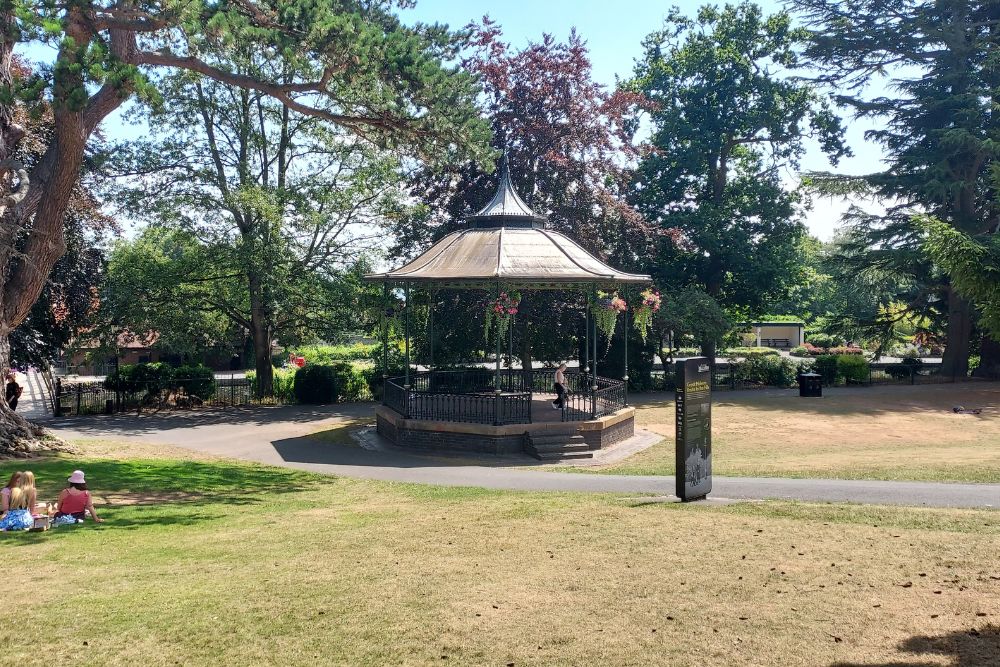
Stourport on Seven, is about half an hour’s drive from the site. It has a permanent fun fair by the canal basin which links up to the River Severn. Boat trips are available the other side of the bridge but you need to check their Facebook/web page before setting out on the day, as they do have private hires booked and there may be no public trips available. https://www.riverkingevents.co.uk/ There is a large Tesco Supermarket on the edge of the town.

The historical canal basins, recently given Heritage Status are there, and there is a café/pub but no parking nearby. https://visitworcestershire.org/business-directory/stourport-basins
For those people who enjoy walking there are plenty of waymarked routes to follow all around the area. A particularly interesting one, with an accompanying leaflet can be found here. It is a few minutes from the site.
For those people who are interested in classical music/history in general, a trip to the birthplace of Elgar may feature on your list. The National Trust runs it. There is a visitor centre, including a café, (independently owned), fully accessible toilets and facilities. Dogs are allowed everywhere except inside the cottage itself. The ground floor of the cottage is accessible but not the upstairs. Accessible and general parking is just outside the visitor centre with a very short, level walk to the cottage. It is possible to sit in his garden and imagine him composing his music whilst he was there. The staff were very pleasant, helpful and knowledgeable. Entrance is free to National Trust members. https://www.nationaltrust.org.uk/visit/worcestershire-herefordshire/the-firs

There are a number of pubs in the area but most need a car journey to get to. We tried the Masons Arms, this being pretty much the nearest one to the site. It is a very pleasant restaurant/pub with a real ale offering and outdoor seating. Dogs are allowed and good parking to the side/rear.
Another pub is called the Bell Inn, nearer to the Tesco Express mentioned above. Again, very much a restaurant/pub with a small real ale offering. There is outdoor seating and a children’s play area. It is dog friendly and the staff are welcoming and helpful. Both of these pubs also offer rooms to stay in which seem to be a feature of pubs around the area.
Summary
A very pleasant site with excellent facilities and a very helpful owner. Whilst being located out in the countryside, you are centrally located to a broad range of places to visit and activities to participate in. We would return again.
Bounds Campsite (CS) Site Review
Camping & Caravan Club – 5 pitches – members only
Fulbourn, Cambridge. CB21 5BT
Date of Visit: July 2025
Overall View
This is an adults only, dog friendly, camping and caravanning club certified site situated in the picturesque village of Fulbourn, approximately 5 miles south-east of the world famous city of Cambridge. www.boundscampsite.co.uk You must be a member of the Caravanning and Camping Club to stay here. You can see a site arrival video for this campsite here.
The site is in two acres of level grassed areas which are allowed to accommodate up to 5 caravans and 10 tents at any one time as per CCC rules.
Security is excellent with a large key coded automatic sliding gate.
The site is quiet, secure and secluded. Pitches are set in an orchard setting, farm land surrounds the site with plenty of wildlife for nature lovers.

There is also an adjacent field available to non-members and rallies with room for 25 units and offering 16 EHU points.

Facilities
There was no WiFi offering and we found mobile reception poor on both EE and Three inside the ‘van, despite their coverage checkers suggesting otherwise, possibly due to the trees. Vodafone and O2 promised good 4G coverage inside and out.
There is a 16 amp EHU to each pitch. There is a water point at the front of the site to the side of a wooden hut. Waste water is disposed of in the hedgerow around the site.
There are two toilet with showers which are of a domestic variety in enclosed shower cubicles. One of these is partially set up as accessible although there is a step into the shower cubicle. There is an additional single toilet. Shower/bath mats are provided and there is heating. They are kept very clean and tidy and are certainly a highlight of a small site such as this. There is also a baby changing mat in the toilets area.

In addition, there is a Summer House with sofa, tables and chairs, plus a wooden building which encompasses a camper’s kitchen with fridge, freezer, toaster and basic amenities. Each pitch also has access to a wooden picnic bench.

Review of Site Pitch
The pitches are laid to grass in a non-regimented style which affords each pitch some measure of privacy and shade from sun if required. They are generally level; we did not need a ramp. Overall, the grass on the site is very well kept.
Around and about
There are two pubs within walking distance – The Six Bells and White Hart, both offering food too, however the White Hart was closed awaiting new tenants.
The village of Fulbourn is close by, being a 10 minute walk or 5 minutes in the car from the site. https://www.fulbournpc.org/
The nearest supermarket is Tesco Extra – this has a fuel station and is less than three miles away. There are a number of guided walks around and from the village and the surrounding area – further details can be found here: www.fulbournpc.org/about-fulbourn/footpaths-and-walks/
For those who are interested in history, particularly of Roman era, the campsite allows you excellent views of the roman site of Wandlebury.
www.wikipedia.org/wiki/Wandlebury_Hill_Fort
The site is close to a number of public transportation options – the Park and Ride Service is particularly useful and situated in convenient places on the outskirts of Cambridge. In addition, there are number of cycle paths – something Cambridge is famous for. www.cambridgeparkandride.info/
The nearest railway station is at Cambridge itself. www.nationalrail.co.uk Trains from London, the South Coast run directly and connecting services with the Midlands and North via Birmingham.
The nearest bus stop is a ten minute walk away, buses will take you into Cambridge and to the railway station. See stagecoachbus.com for more information.
For those people who may need to attend Addenbrookes Hospital, the site is conveniently located to access. www.cuh.nhs.uk/
It is difficult to know where to start with information about the city itself – a useful starting point is the local web-site. www.visitcambridge.org/ It is not recommended that you drive into the city as parking is very limited and expensive. The park and ride service is a much better option and runs all day.
If you wish to explore further afield, here are some options for you to research further.
Anglesey Abbey, Gardens & Lode Mill (NT) :
www.nationaltrust.org.uk/visit/cambridgeshire/anglesey-abbey-gardens-and-lode-mill
Audley End House & Gardens (EH) :
www.english-heritage.org.uk/visit/places/audley-end-house-and-gardens/
Ely: City, River & its Cathedral :
www.capturingcambridge.org/east-cambridgeshire/ely/river-ouse-at-ely/
Guided boat tours are available on the River Ouse in Ely.
www.facebook.com/LibertyBelleEly/
Grantchester & the famous Orchard Tea Gardens, (dog and child friendly) – an historical village and Cambridge Institution.
www.theorchardteagarden.co.uk/
Ickworth House & Estate (NT) :
www.nationaltrust.org.uk/visit/suffolk/ickworth-estate
Imperial War Museum, Duxford : www.iwm.org.uk/visits/iwm-duxford
Wimpole Farm & Estate (NT) :
www.nationaltrust.org.uk/visit/cambridgeshire/wimpole-estate
Summary
A very pleasant site located convenient to Cambridge and given the numbers of outfits there whilst we stayed, it is very popular. The showers, toilets and campers’ facilities are a real bonus.
Caravanning in the UK’s national parks: What to know before you go
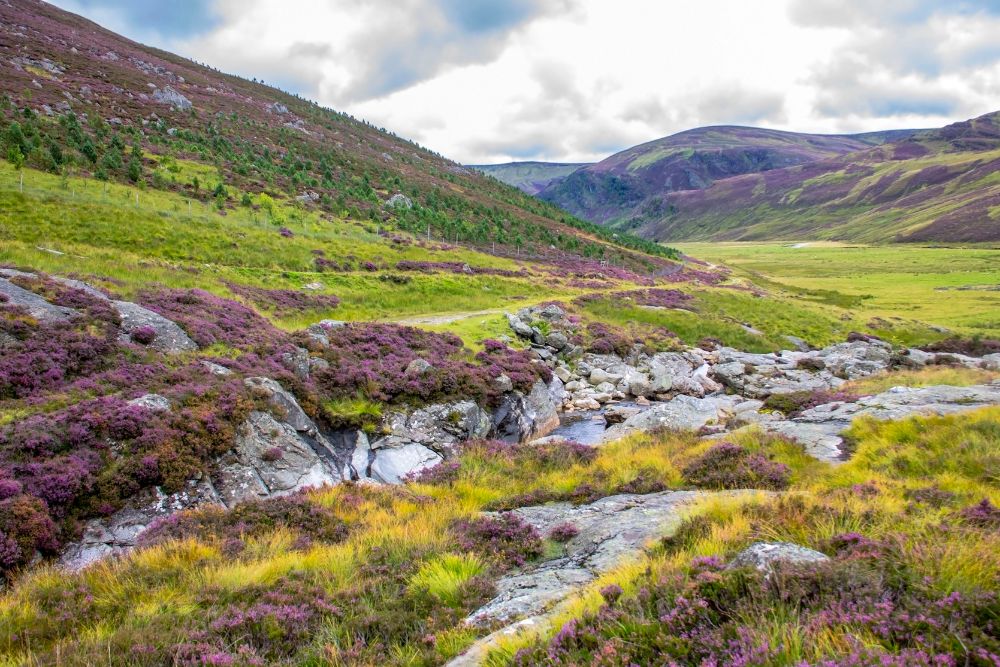
You’ve almost certainly admired them on daytrips, but have you asked yourself whether you can take your caravan into one of the many splendid national parks in the UK?
The short answer is yes, you can. The country’s national parks can make for excellent destinations for caravan holidays in the UK – provided, of course, that you respect the fragile environment of the park and do your utmost to tour responsibly.
So, you really can caravan in a national park?
Caravanning in the UK national parks is certainly permitted but there’s not every place you can take your caravan or pitch up overnight.
To experience the national parks at their finest, of course, you’ll want to stay the night or camp there for several days. But you must pitch your caravan only at one of the designated national park campsites or those certified by the Camping and Caravanning Club or the Caravan and Motorhome Club.
Wild camping – at a random spot away from a conventional campsite – is permitted only in Scotland, where the privilege is restricted to those camping under canvas and who are travelling on foot, by bicycle or by boat.
In none of the national parks can you pitch your caravan outside a campsite, and the same applies to overnight stays in the parks’ laybys and carparks.
When you are towing your caravan in a national park, remember that many of the roads will be winding and narrow. Invest in a good UK touring caravan guide or use the free maps and overviews available on the national parks website.
What types of caravan sites are available?
Browse your UK touring caravan guide for the caravan-friendly parks you’re likely to find in any of those you intend to visit. They will range from the basic, back-to-nature variety to those that offer more luxurious amenities.
Sites with a full range of amenities, offering a luxury, glamping lifestyle as well as those of a more rustic, tranquil and peaceful nature, can be found at private campsites and those registered with either the Caravan and Motorhome Club or the Camping and Caravanning Club. The latter also offer some seasonal pitches (where you can leave your caravan for up to six or even seven months) where spaces and availability allows.
How to caravan responsibly in national parks
The key to caravanning responsibly in any of the national parks is to leave the place as you found it – effectively to leave no trace of your having been there.
That will involve some fairly common sense precautions – such as:
- properly disposing of your waste, avoiding damage to the vegetation, sticking to the marked paths when you’re walking or biking from your pitch;
- following and respecting the local signage – on things such as one-way routes, weight limits, and the avoidance of livestock;
- avoiding open fires – except in permitted areas – and relying instead on cylinder gas and fire-safe alternatives; and
- wherever possible, supporting local businesses and the rural economy when you are shopping or eating out.
Some further considerations
Our national parks are a treasure and are typically free to enjoy when you’re towing a caravan. All that is required is a degree of planning and a respectful attitude – allowing you to book your campsites well in advance (especially in the height of the season) and remembering always to park up responsibly.
Caravanning in UK national parks can be a delight, and there are plenty of them to explore.
Disclaimer:
The information provided in this article is for general guidance only and is based on publicly available sources at the time of writing. Rules and regulations regarding caravanning in national parks may vary by location and are subject to change.
Readers are strongly advised to consult official sources such as the relevant national park authority, the Camping and Caravanning Club, or the Caravan and Motorhome Club before making travel or site arrangements.
We accept no responsibility for any errors, omissions, or consequences arising from the use of this information. Always caravan responsibly and in accordance with local guidelines.

